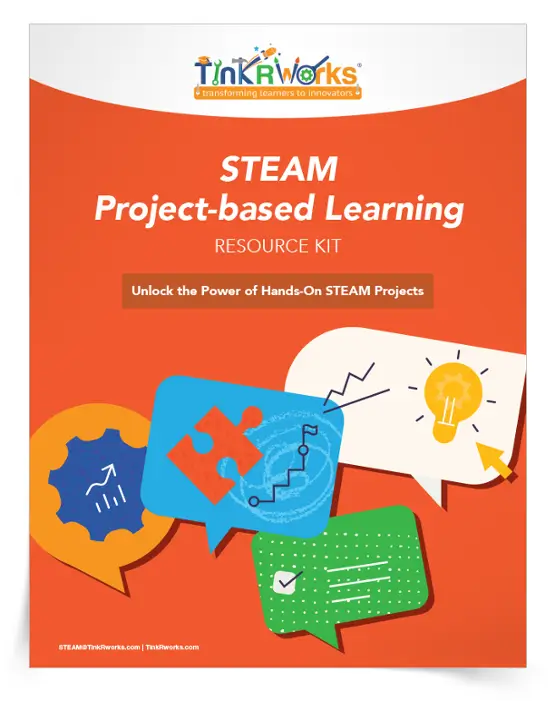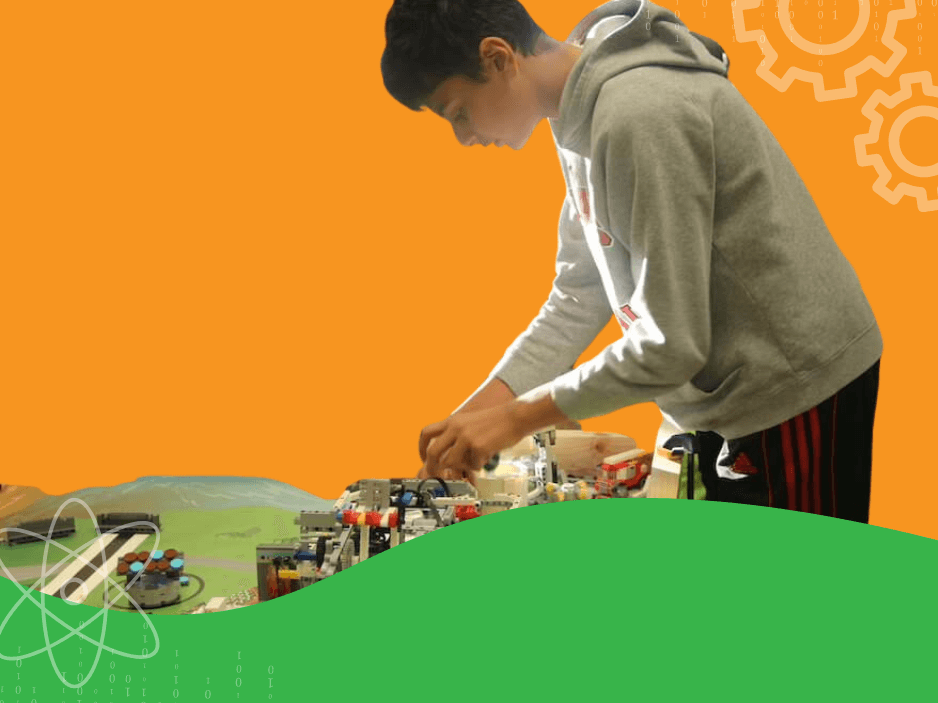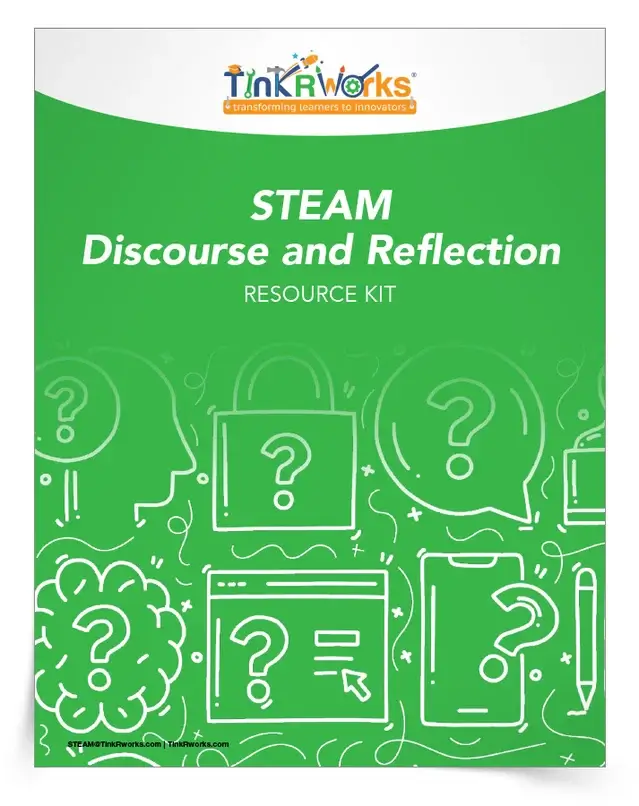Mac and cheese, peanut butter and jelly, STEAM and PBL–all things that perfectly go hand in hand! In fact, Project-based Learning (PBL) is at the heart of STEAM (science, technology, engineering, arts, and math) curriculum. In any rigorous STEAM lesson, PBL is the avenue by which students acquire deeper knowledge through active exploration of real-world challenges and problems. In this article, you’ll learn how to enhance STEAM PBL projects, design appropriate PBL driving questions, and encourage discourse during PBL lessons.
The Case for STEAM Project-based Learning
There’s a pretty good reason why every STEAM curriculum is designed around PBL: when it comes to both student learning gains and long-term retention, it works! A Project-based Learning curriculum has shown to have a wide-ranging and positive impact on a plethora of areas, including…
Motivation
- A growing body of research supports the idea that Project-based Learning increases student buy-in, motivation, and engagement. Additionally, teachers report that when students are engaged deeply in course content, they experience fewer behavioral issues and expend less energy on classroom management. (A win-win for all!)
21st Century Skills
- STEAM PBL projects teach students valuable, transferable, and real-world skills. Instead of students asking, “What am I ever going to do with this?” when memorizing math equations, they learn foundational mathematical and scientific skills all while having FUN! By formulating their own questions, and then designing projects that help to answer them, students not only learn foundational content knowledge, but they also sharpen their analytical, interpersonal, cooperative, problem-solving, critical-thinking, creative, and time management skills.
Teacher Satisfaction
- In addition to helping your students learn faster, retain the information longer, and stay engaged, motivated (and well-behaved), PBL also helps teaching feel exciting and satisfying.
Community Connection
- Since many PBL projects involve real-world, community-based problems, these lessons provide rewarding opportunities for students, teachers, schools, and districts to connect with local residents, leaders, and organizations.
Already hooked on Project-based Learning and can’t wait to get started designing your next lesson? Learn more about the benefits of this student-centered pedagogy by downloading our STEAM Project-based Learning Resource Kit today!
Core Design Principles of Rigorous STEAM Project-based Learning
While it’s true that a Project-based Learning curriculum has immense benefits for both students and teachers, for PBL lessons to be fully effective, they must have a handful of key elements.
1. Challenging Problem or Question
The reason that PBL lessons feel so meaningful to students is because of this critical problem/solution structure. When students formulate their own challenging questions and then seek out answers by designing and carrying out a project, they are learning hands-on, relevant knowledge. Students are engaged deeply in the learning process and retain this information longer because the content is immediately purposeful as they apply it to innovative solutions.
2. Deep Integration of Academic Standards
One objection educators have to PBL curricula is the work it requires to implement. They want to know if the trouble will be worth it in terms of student learning gains. And it is–if done well! That’s why all effective PBL lessons should deepen students’ knowledge of core subject areas by aligning with academic standards.
3. Student Voice
Faced with a challenging problem or question, students must be able to exercise judgment and make decisions about how to resolve it. Otherwise, the project becomes an exercise, a set of directions to follow. True project-based learning requires that students reflect on their process and articulate their thinking.
To help foster this critical aspect of STEAM learning, we recommend using our STEAM Discourse and Reflection Resource Kit. This free resource is designed to encourage students to reflect on what they’ve learned and develop their voice through structured discourse and purposeful questioning.
4. Sustained Inquiry
Inquiry is at the heart of all effective PBL lessons. Challenging problems or questions are used to launch an inquiry designed to solve the problem or answer the driving question. The classic PBL project begins with students asking, “What do we know?” and “What do we need to know?”
5. Reflection
Careful reflection on their own work allows students to assess whether they are effectively solving their driving questions or problems. This crucial step encourages students to engage in critical thinking and innovation, helping them decide whether to proceed with their current plan or make necessary adjustments.
To support this process, we offer STEAM Project-based Learning Student Organizers. These free organizers are designed to enhance student reflection by guiding them through their project journey—from where they started to where they ended, and everything in between.
How To Enhance Your STEAM Project-based Learning
At this point, you might be excited and ready to give PBL a shot. But knowing just how to get started can feel pretty intimidating, especially with a lesson that requires so much planning and preparation. While we can’t make your photocopies for you or help divide your supplies into even groups, we can help provide a few key tips and tricks to enhance your Project-based Learning instruction right from the start.
- When planning for STEAM Project-based Learning, think outside of the acronym! STEAM is more than its individual parts– it is collaboration/interpersonal skills, connecting content to real-world concepts, problem-solving, and critical thinking.
- Focus on the process just as much as the product–which can be hard to do in a Project-based Learning lesson where you might literally be producing a physical product! Do this by using both summative and formative assessments to determine students’ progress.
- Make students’ voices central by giving them a chance to express their opinions and make choices during the overall course of the project.
- Engage, inspire, and motivate students by writing intriguing driving questions. With a well-constructed driving question, students will be excited to seek out information and find solutions.
- Foster robust classroom discourse by using question stems and prompts. (HINT: You can find ready-to-use, high-quality question stems and prompts in our STEAM Project-based Learning Resource Kit.
- Allow your students to take the lead. While you do need to set clear expectations, you can allow creativity and leadership skills to flourish by giving them direction and not directions.
- Make sure students are reflecting as they go. By using a reflection page, students can record and report on their process and progress, increasing metacognition and analytical skills.
- When assessing, use open-ended rubrics that you tailor to the skills taught during individual projects. This will allow you to have an authentic picture of whether or not students hit desired learning gains.
Understand and Construct Driving Questions for PBL
All highly-effective Project-based Learning lessons are built around a single organizing principle: answering a driving question! Knowing just what a driving question is and how to write an intriguing one is key to making your PBL lessons exciting, engaging, meaningful, and worthwhile.
These types of deep, open-ended inquiries motivate and guide students to analyze, design, collaborate, and innovate. Highly-effective driving questions should also…
- Sound like a real-world problem and not like a test question
- Feel relevant for students’ lives and therefore compelling to answer
- Lead to more questions
- Engender higher-order thinking
- Provide clarity on the project itself
- Connect with learning objectives
For a plug-and-go driving questions formula (and more), check out our STEAM Project-based Learning Resource Kit today!
Encouraging Discourse During PBL
Any high-performing PBL environment should be rich with classroom discourse. Through collaborative conversations and teamwork, students not only sharpen their interpersonal skills but also explore new information and dive deeper into course concepts.
To make the most of your PBL lessons, it’s vital to nurture a supportive, open classroom culture that welcomes robust student discourse and…
- Builds on and respects students’ thoughts and opinions
- Creates a community of learners that are hungry for knowledge
- Improves reasoning ability and sharpens analytical skills
- Provides students with opportunities to share ideas, clarify understandings, make claims, present evidence, and correct misunderstandings
- Allows and encourages students to reflect on what they’ve learned as they critique the work of other students
- Progresses the thinking of the entire group
While this type of discourse is vital to a high-performing PBL environment, cultivating these types of advanced collaborative discussions can be both challenging and delicate. One way to help get students started if they’re feeling shy, stuck, or unmotivated is to use question stems and prompts, such as…
- How can _____ improve ______?
- How can ______ be applied to _______?
- How does _______ affect ________?
- What evidence supports _______?
- Can you explain to your classmates how you came to that conclusion?
- Can you restate what you said in a different way?
For even more question stems, prompts, and ideas on how to make the most out of your next PBL lesson, check out our STEAM Discourse and Reflection Resource Kit.
Conclusion
As teachers, schools, and districts across the country realize the incredible benefits of inquiry-based learning, there’s been a growing excitement for STEM curricula and Project-based Learning lessons. To make the most out of your PBL lessons, it’s important to know what Project-based Learning looks like, why it’s so important, and how to enhance your PBL projects.








